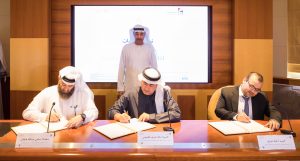Dubai may peg rents to green building ratings
Buildings with higher green ratings will be allowed to have higher rent rates, municipality says

Dubai Municipality is considering pegging rent costs to the level of certification achieved by buildings under its new Al Safat green building rating system, a senior official has said.
New buildings in Dubai will now be rated based on the implementation of green building standards, the municipality has said. Buildings that do not meet a minimum of a ‘bronze rating’ will not be given permits, it added.
The Al Safat scheme will apply to all project types, including residential, commercial, industrial and other facilities, said Hussain Nasser Lootah, director general of Dubai Municipality. Buildings will now be ranked as Platinum, Gold, Silver and Bronze, and will be applicable to all upcoming buildings, and to those built since the mandatory implementation of the green building code in Dubai in 2014.
As such, the municipality is considering pegging rent costs to the new rating system to incentivise owners and developers to build greener buildings.
“We are working to determine the rents for each certification. For example, the rent for an apartment in a Silver-certified building could stand at AED50,000, whereas the rent could range from AED70,000 to AED80,000 in a Platinum-certified project,” said Ahmed Saeed Albidwawi, head of the Research Department and Building Systems at the authority.
While Al Safat will be mandatory for new buildings taking permits from September 1, buildings that have already been certified as green will have to reapply for a rating certificate.
Meanwhile, older buildings will be retrofitted with environmentally friendly and sustainable materials, along with more efficient lighting and air-conditioning, Lootah explained.
Essa Al Haj Al Maidour, the deputy director general of Dubai Municipality, said that the new rating system focuses on the lifecycle of the building and other crucial aspects, such as increased efficiency, reduced energy and water consumption. Also included is the use of environmentally friendly materials, renewable energy characteristics and alternative energy sources and construction design.
“By applying Al Safat standards, a building can produce savings in energy use of up to 34%,” said Al Maidour.
Al Safat aims to reduce the consumption of electricity by 20%, water consumption by 15%, carbon dioxide emissions by 20%, and waste by 50%.
More than 90% of existing buildings in Dubai already possess the necessary criteria to qualify for a bronze rating, Lootah added.
Khalid Mohammed Saleh Al Mulla, director of Buildings Department at Dubai Municipality, said that following the introduction of the Green Building Regulations in 2010, the municipality had witnessed the completion of 1,433 green building projects across the emirate.
He also reassured project owners, explaining that adopting Al Safat would cause a minimal increase of construction costs, with costs not expected to exceed beyond 5% of current rates.
“Before 2001, there were more than 100,000 buildings in Dubai. We need another programme for them,” he added.





